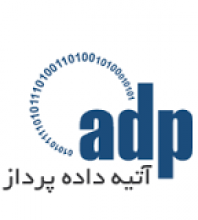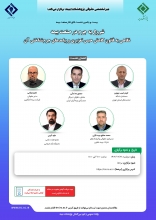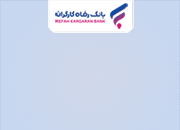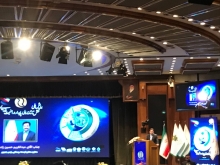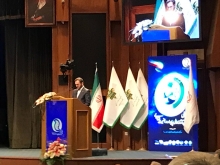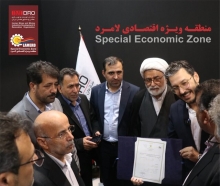تحلیل ساختار وابستگی بین ریسک های بیمه ای در شرکت سهامی بیمه ایران: رویکرد هم انباشتگی
تحلیل ساختار وابستگی بین ریسک های بیمه ای در شرکت سهامی بیمه ایران: رویکرد هم انباشتگی
تحلیل ساختار وابستگی بین ریسک های بیمه ای در شرکت سهامی بیمه ایران: رویکرد هم انباشتگی
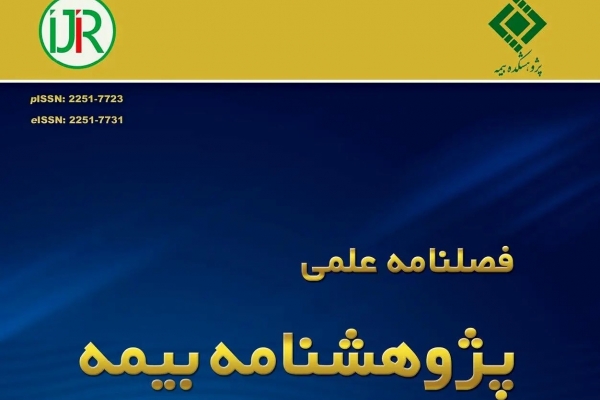
به گزارش دیوان اقتصاد،
نوع مقاله : مقاله پژوهشی
نویسندگان
1 دانشجوی دکتری، گروه مدیریت مالی، دانشکده حسابداری و مدیریت، واحد یزد، دانشگاه آزاد اسلامی، یزد، ایران
2 دانشیار، گروه اقتصاد، دانشکده حسابداری و مدیریت، واحد یزد، دانشگاه آزاد اسلامی، یزد، ایران
3 استادیار، گروه مدیریت مالی، دانشکده حسابداری و مدیریت، واحد یزد، دانشگاه آزاد اسلامی، یزد، ایران
https://doi.org/10.22056/ijir.2025.04.06
چکیده
پیشینه و اهداف: بررسی روابط بلندمدت و همانباشتگی میان شاخههای مختلف بیمه برای درک مدیریت ریسک و پایداری مالی در صنعت بیمه اهمیت زیادی دارد و این روابط به دلایلی همچون ماهیت ریسکهای مشابه، وابستگی به متغیرهای اقتصادی (مانند نرخ بهره، تورم، یا رشد اقتصادی) و همچنین مدیریت سرمایة مشترک در بلندمدت پدیدار میشوند. در این مطالعه، ساختار وابستگی بین شاخههای مختلف بیمهای بررسی میشود.
روششناسی: در این مطالعه، ساختار وابستگی بین شاخههای مختلف بیمهای از روشهای همانباشتگی خطی یوهانسن و همانباشتگی غیرخطی هنسن و سئو و وجود فرایندهای تعادلی در روابط بلندمدت بین آنها مورد بررسی میشود. در این راستا مجموعه دادههایی شامل خسارتهای ماهانه (بدون بازیافت) حاصل از رشتههای بیمة غیرعمر مسئولیت، شخص ثالث و بدنة خودرو بهدلیل ماهیت درجة انباشتگی غیر صفر و یکسان آنها طی دورة ماهانة 1402:12-1390:01 به کار برده شده است.
یافتهها: نتایج به وجود حداقل یک بردار همانباشتگی خطی بین ریسک شاخههای بیمهای اشاره میکند. اما بررسی وجود روابط غیرخطی بین خسارات سه شاخة بیمهای در قالب مدلهای تصحیح خطای برداری آستانهای نشان میدهد زمانی که شکاف بین خسارتها در بیمههای مسئولیت و بدنه کمتر یا بیشتر از مقادیر آستانهای برآورد شده باشد، تعدیل بهسمت تعادل بلندمدت ایجاد میشود، اما فرایند تعدیل در مواردی که شکاف خسارتها بیشتر از آستانه باشد تعدیل بهسمت تعادل بلندمدت با سرعت بیشتری صورت میگیرد. همچنین، اثر تصحیح خطای بسیار قویتری برای شاخة بیمة مسئولیت نسبت به دو شاخة دیگر وجود دارد. پس از آن بیمة بدنه نسبت به بیمة شخص ثالث تصحیح خطای بالاتری دارد. در نهایت بیمة شخص ثالث از تصحیح خطای بسیارکمتری نسبت به بقیه برخوردار است.
نتیجهگیری: بیمههای مسئولیت از ریسک نظاممند بالایی برخوردارند و مجموعه شرایط اقتصادی کشور مانند نرخهای تورم بالا و تنگناهای اقتصادی ناشی از تحریمها که به کاهش کیفیت خودروها و افزایش خسارات در بخش بیمههای ثالث و بدنه منجر شده است به افزایش ریسک نظاممند در بخش بیمههای مسئولیت نیز میانجامد، زیرا این شاخه از بیمه سرعت تعدیل بالایی در روابط خود با بیمههای ثالث و بدنه دارد. این موضوع در ارتباط با بیمة بدنه نیز صادق است و افزایش خسارات شخص ثالث میتواند ریسک نظاممند بیمة بدنه را نیز افزایش دهد و شکاف بین ریسکهای شخص ثالث و بدنه را در بلندمدت از میان بردارد. بنابراین مدیریت ریسک و سرمایه در شرکتهای بیمه مستلزم توجه به چنین وابستگیهایی در شاخههای بیمهای است و مدیریت پرتفوی این شرکتها بدون توجه به وجود تعدیل در روابط بین ریسک انواع شاخههای بیمهای میتواند این شرکتها را در معرض زیانهای قابل توجهی قرار دهد.
کلیدواژهها
موضوعات
عنوان مقاله [English]
Analysis of the dependence structure among insurance risks in Iran's insurance company: Cointegration approach
نویسندگان [English]
- Zeynolabedin Aghilifar 1
- Sayed Yahya Abtahi 2
- Gholamreza Askarzadeh 3
- Hamid Khajeh Mahmoodabadi 3
1 Phd Student, Department of Financial Management, Faculty of Accounting and Management, Yazd Branch, Islamic Azad University, Yazd, Iran.
2 Associate Professor, Department of Economics, Faculty of Accounting and Management, Yazd Branch, Islamic Azad University, Yazd, Iran.
3 Assistant Professor, Department of Financial Management, Faculty of Accounting and Management, Yazd Branch, Islamic Azad University, Yazd, Iran.
چکیده [English]
BACKGROUND AND OBJECTIVES: Examining the long-term relationships and cointegration among different branches of insurance is crucial for understanding risk management and financial stability in the insurance industry. These relationships emerge due to factors such as the nature of similar risks, dependence on economic variables (e.g., interest rates, inflation, or economic growth), and shared capital management in the long term. Therefore, cointegration analysis is a powerful tool for identifying long-term relationships among different insurance branches. This method helps insurance companies to adopt better risk management strategies, allocate their capital optimally, and provide better services to customers. Since the insurance market is influenced by economic, social, and environmental factors, this analysis is of great importance for improving strategic decision-making. This study investigates the dependency structure among various insurance branches using nonlinear cointegration analysis.
METHODS: In this study, the dependency structure among different insurance branches is analyzed using Johansen's linear cointegration method and Hansen and Seo's nonlinear cointegration approach, as well as the existence of equilibrium processes in their long-term relationships. For this purpose, a dataset comprising monthly claim amounts (excluding recoveries) from liability insurance, third-party insurance, and automobile body insurance is used. These branches were selected due to their non-zero and similar order of integration. The dataset spans the period from January 2011 to December 2023.
FINDINGS: The results indicate the existence of at least one linear cointegration vector among the risks of different insurance branches. However, examining the presence of nonlinear relationships among the three branches within the framework of threshold vector error correction models (TVECM) reveals that adjustments toward long-term equilibrium occur when the gap between liability and automobile body insurance claims is within or beyond estimated threshold values. Moreover, when the loss gap exceeds the threshold, the adjustment towards long-term equilibrium occurs at a faster rate. Additionally, the error correction effect is significantly stronger for liability insurance compared to the other two branches. Automobile body insurance exhibits a higher error correction rate than third-party insurance, while third-party insurance demonstrates the weakest error correction effect. The estimation of the three equations related to the long-term relationships of insurance branches shows that the error correction component in the equations related to liability insurance and body insurance is significant in both the high and low regimes. However, the error correction component in the equations related to third-party insurance is not significant in either regime. On the other hand, the error correction coefficient in the equations for liability insurance and body insurance is much higher in the high regimes than in the low regimes. In other words, when the gap between the losses in liability and body insurance is estimated to be less than or greater than the threshold values, an adjustment towards the long-term equilibrium occurs, but the adjustment process towards the long-term equilibrium occurs more rapidly in cases where the loss gap is greater than the threshold. Also, there is a much stronger error correction effect for the liability insurance branch than for the other two branches. Then, body insurance has higher error correction than third-party insurance. Finally, third-party insurance has much lower error correction than the others.
CONCLUSION: Liability insurance is exposed to high systematic risk, and macroeconomic conditions—such as high inflation rates and economic constraints due to sanctions—have led to a decline in vehicle quality and an increase in claims for third-party and automobile body insurance. Consequently, the systematic risk in the liability insurance sector has also increased, as it exhibits a high adjustment speed in its relationships with third-party and automobile body insurance. A similar pattern is observed for automobile body insurance, where an increase in third-party insurance claims can raise the systematic risk of automobile body insurance, ultimately eliminating the risk gap between these two branches in the long term. Therefore, risk and capital management in insurance companies shall account for such dependencies among insurance branches. Ignoring the adjustments in inter-branch risk relationships could expose insurance firms to significant financial losses. It is suggested that since third-party insurance has less error correction than other branches, insurance companies and policymakers in the country's insurance sector pay special attention to risk management in this sector because increasing risk in this sector, given the high adjustment speed of other insurance branches compared to third-party, can also increase the risk of other sectors and create systematic risk in the entire insurance industry. On the other hand, to optimally manage the risk of liability and body insurance, insurance companies need to pay attention to the critical loss thresholds in this type of insurance and estimate these thresholds according to the long-term relationships among losses in different insurance branches in each company.
کلیدواژهها [English]
- Cointegration approach
- Dependence structure
- insurance risks
- Iran's insurance company
مراجع
نامه به سردبیر
سردبیر نشریه پژوهشنامه بیمه، هرگونه پیشنهاد و انتقاد دیگر نویسندگان و خوانندگان را در خصوص نقد و بررسی این مقاله مندرج در سامانه نشریه را ظرف مدت 3 ماه از تاریخ انتشار آنلاین مقاله در سامانه و قبل از انتشار چاپی نشریه، به منظور اصلاح و نظردهی امکان پذیر نموده است.، البته این نقد در مورد تحقیقات اصلی مقاله نمی باشد.
توجه به موارد ذیل پیش از ارسال نامه به سردبیر لازم است در نظر گرفته شود:
[1] نامه هایی که شامل گزارش آماری، واقعیت ها، تحقیقات یا نظریه پردازی ها هستند، لازم است همراه با منابع معتبر و مناسب همراه باشد، اگرچه ارسال بیش از زمان 3 نامه توصیه نمی گردد.
[2] نامه هایی که بجای انتقاد سازنده به ایده های تحقیق، مشتمل بر حملات شخصی به نویسنده باشند، توجه و چاپ نمی شود.
[3] نامه ها نباید بیش از 300 کلمه باشد.
[4] نویسندگان نامه لازم است در ابتدای نامه تمایل یا عدم تمایل خود را نسبت به چاپ نظریه ارسالی نسبت به یک مقاله خاص اعلام نمایند.
[5] به نامه های ناشناس ترتیب اثر داده نمی شود.
[6] شهر، کشور و محل سکونت نویسندگان نامه باید در نامه مشخص باشد.
[7] به منظور شفافیت بیشتر و محدودیت حجم نامه، ویرایش بر روی آن انجام می پذیرد.
ما را در شبکه های اجتماعی دنبال کنید.
کانال تلگرام دیوان اقتصاد صفحه اینستاگرام دیوان اقتصاد
















